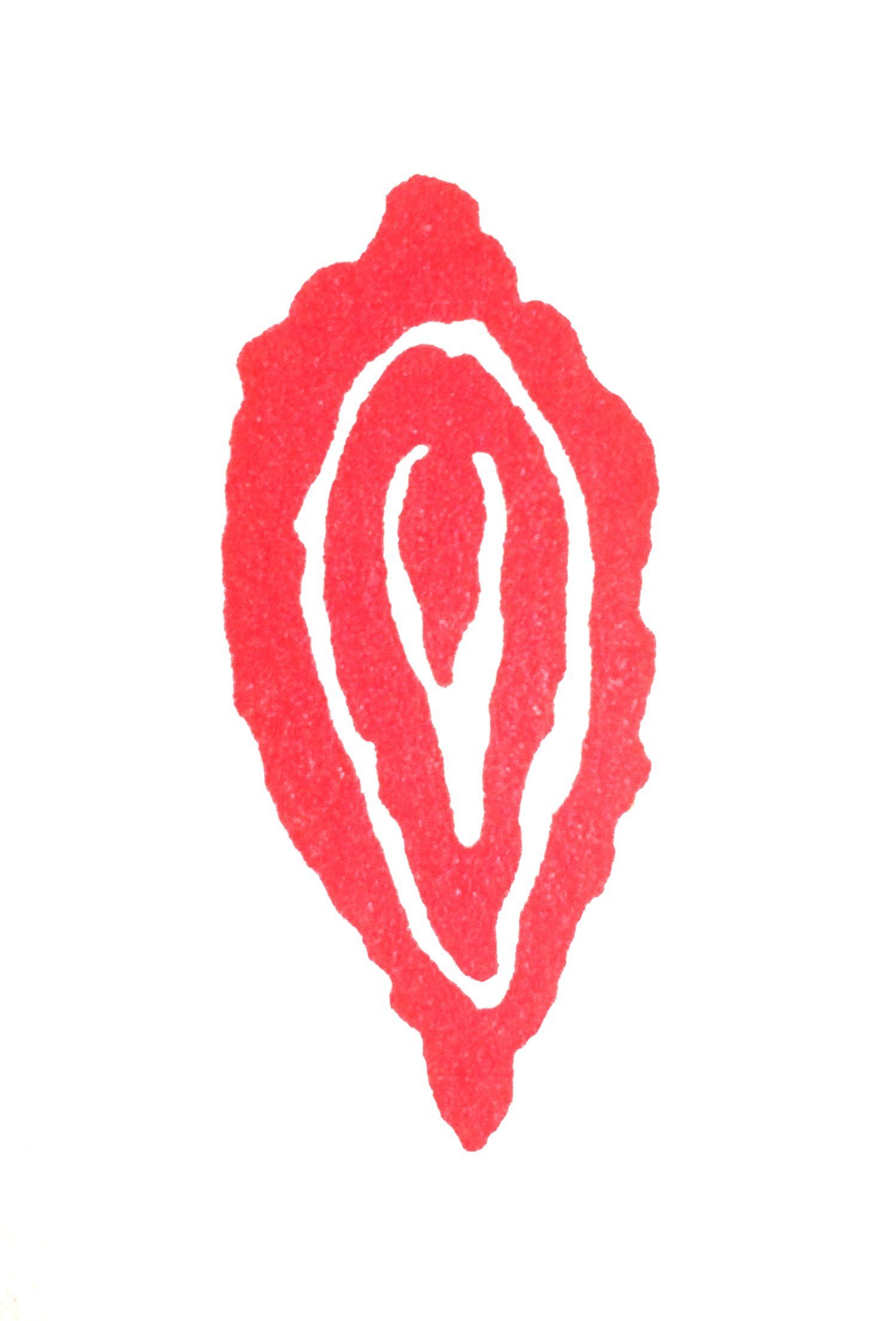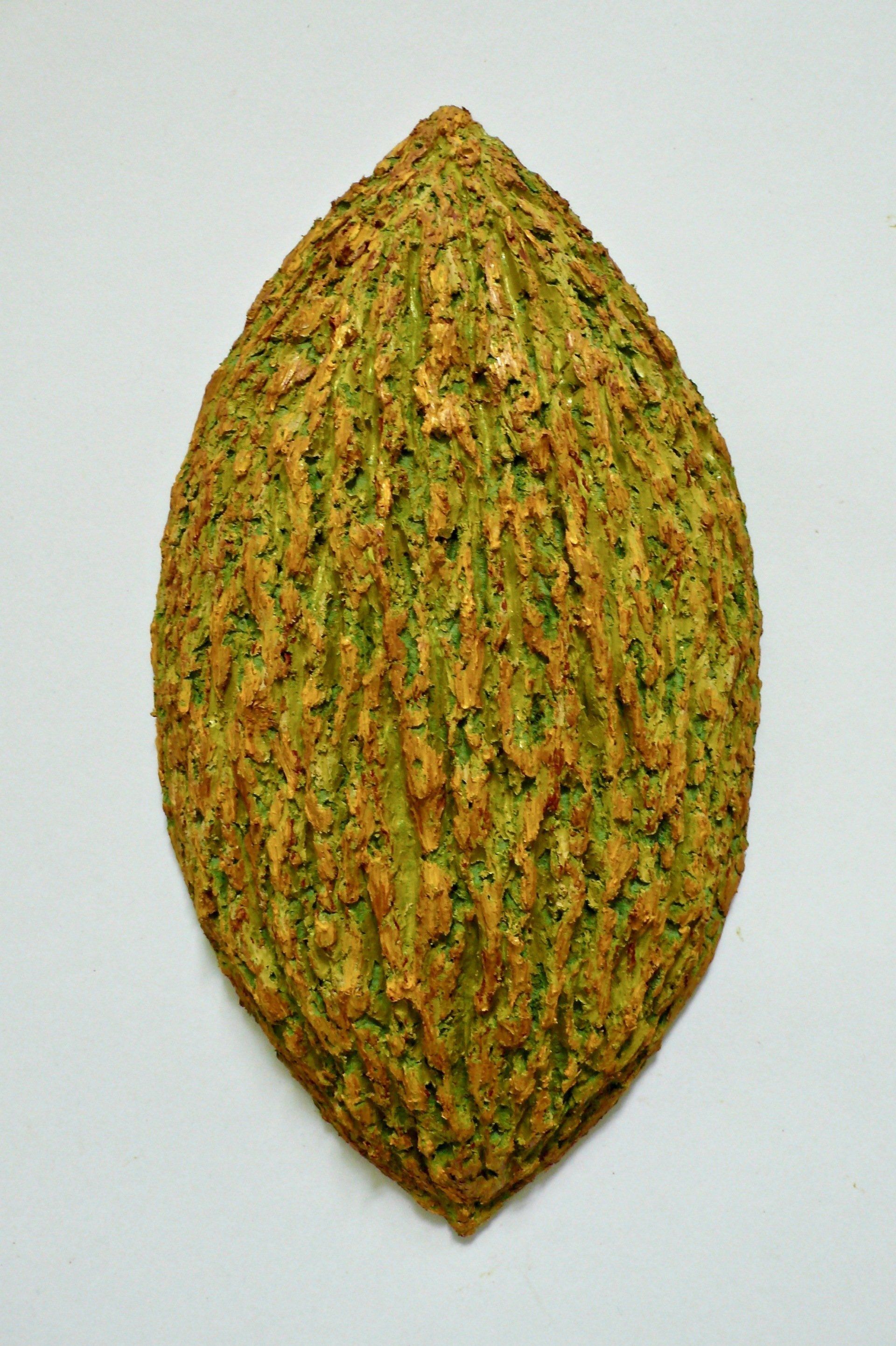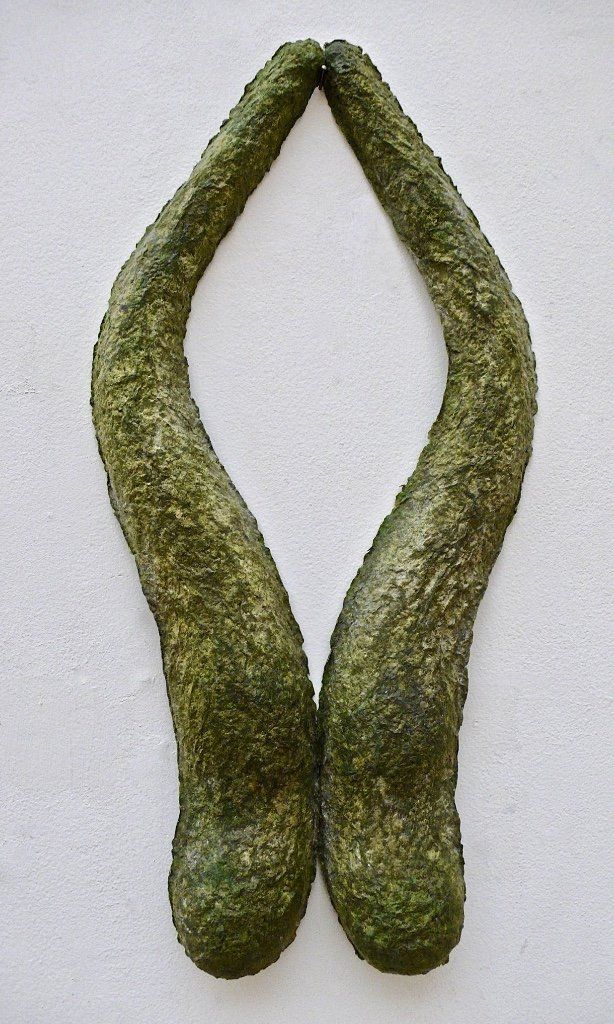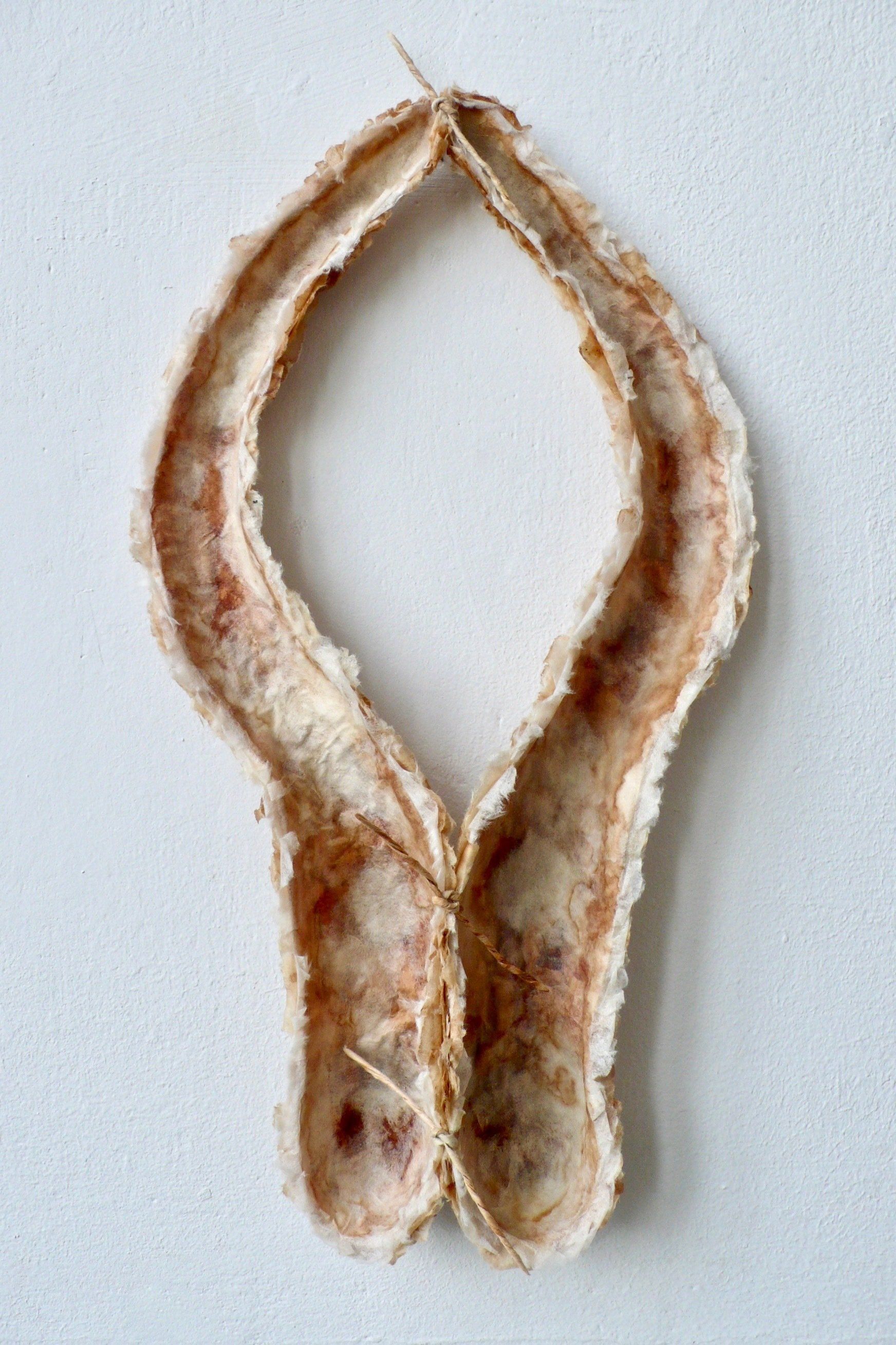
From the seriesMandorla
'The Mandorla is a symbol that is all but unknown today. It was used during medieval Christianity. It is an ancient symbol of two circles coming together and overlapping one another to form an almond shape in the middle. Jensen (1996) describes the mandorla as similar to the image of two mandalas (Sanskrit for circle) merging together until an almond shape is formed in the center. Also known as the “Vesica Piscis”, symbolizing the interactions and interdependence of opposing worlds and forces (Baldock, 1990).
Mandorla is the Italian word for almond. According to Biedermann (1994), the almond is an ancient symbol for the closing up of valuable contents in a hard, almost impenetrable shell. It is a mysterious image.. During medieval times, the almond was interpreted as a symbol of the embryo enclosed in the uterus. The form of the almond which suggests a stylized vulva may have contributed to such an interpretation (Biederman, 1994). It is also a variant of a halo which surrounds the whole body of the holy person (Bruce-Mitford, 1996).'
From: Mandorla: Ancient Symbol of Wholeness. By Brian Jensen
'Another widespread symbol of the Yoni is the Mandorla. An almond-shaped design known in sacred geometry as the vesica piscis, this symbol is often used to represent such concepts as divinity and sacredness - quite fitting for the Yoni, the gateway of life. The mandorla appears quite often in Christian iconography. Considering that the Christian Church freely appropriated symbols from its predecessors for its own use, it is not unlikely that the mandorla-shaped aureole or halo that is often seen surrounding Mary, the Queen of Heaven, is in fact an indication of the powers of the ancient Goddess.'
From: THE YONI sacred symbol of female creative power. By Rufus C.Camphausen
Related works
-
‘Hideaway’ III
ButtonWall sculpture
newspaper pulp, color pigments, oil pastels,
binding medium, H30 x W15 x D5 cm,
2021
-
‘Hideaway’ IV
ButtonWall sculpture
newspaper pulp, color pigments, oil pastels,
binding medium, H30 x W15 x D5 cm,
2021
-
‘Hideaway’ VI
ButtonWall sculpture
newspaper pulp, color pigments, oil pastels,
binding medium, H30 x W15 x D5 cm,
2021
‘Healing Stranger’
Wall sculpture
newspaper pulp, color pigments, oils,
binding medium, H36,5 x W18,5 x D3 cm,
2010-2016
‘Poetical Embrace’
Wall sculpture
recycled paper, Japanese paper (washi),
color pigments, binding medium, paper rope,
H36 x W18 x D3 cm, 2017-2020
‘Nurturing Space’
Wall sculpture
recycled paper, binding medium,
H35 x W18 x D3 cm,
2018
SCULPTUREPODS / SONATA LEPAITĖ
Sonata Lepaitė, afkomstig uit Litouwen, creëert zowel sculpturen gemaakt van papier, ‘scupturepods’, als pastels op papier.
De vormen verwijzen naar omhulsel, vulva, schoot, poort, yoni en cocon.
Deze verbeeldende, metaforische beelden tonen impliciet onze afkomst, ons verlangen en onze geborgenheid.
Sonata is gefascineerd en wordt geïnspireerd door de onbegrensde rijkdom aan paleolithische en neolithische sculpturale zg. ‘venus’ artefacten uit een nog grenzeloos antropologisch tijdsbeeld. Een grote, verwante diversiteit uit zowel de koude als warme klimaatzones van kleine, voornamelijk vrouwelijke figuren, worden overal ter wereld gevonden en opgegraven. Ze verwijzen naar tijden vanaf 40.000 jaar geleden en verbeelden symbolen, representaties, rituelen en betekenissen waarnaar en waarover archeologen en antropologen eindeloos speculeren. Ze zijn even raadselachtig, betoverend en opwindend, als grenzeloos in wat ons als mensen verbindt.
Sonata transformeert en verwerkt haar fascinatie en inspiratie in haar huidige ruimtelijke en vlakke werken.





